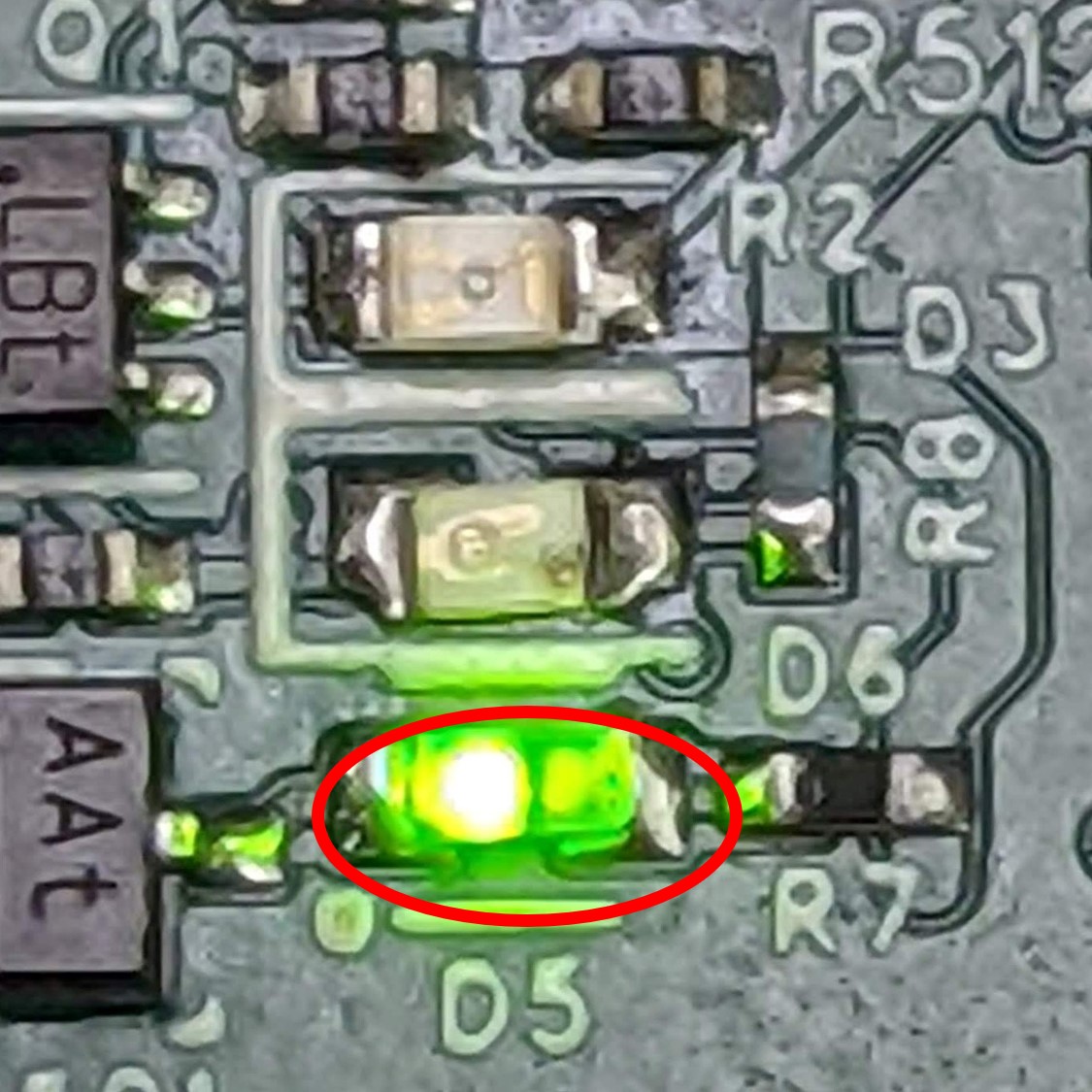DLPU113A December 2021 – April 2022 DLP2021-Q1
2.3 Power-Up
Follow these steps to properly supply power to the EVM:
Connect the input power cable to a power supply that meets input power specifications defined in Section 1.3.1. A 12-V supply with a 0.5-A limit is recommended for out-of-box evaluation. The red cable for the V+ terminal and black cable for the V– terminal. A red LED will illuminate on the electronics board to indicate the EVM is receiving power.
Set the operation mode switches to the Local Host Control operating mode as defined in Section 1.2.1. The EVM is already flash programmed with TI demo image/video content when shipped for out-of-box evaluation.
 Figure 2-2 Local Host Operating Mode LED Status
Figure 2-2 Local Host Operating Mode LED StatusTurn on the supply power, and the EVM will immediately begin to display content.